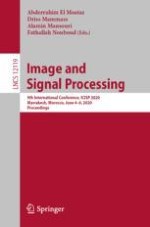2020 | OriginalPaper | Buchkapitel
Considerably Improving Clustering Algorithms Using UMAP Dimensionality Reduction Technique: A Comparative Study
verfasst von : Mebarka Allaoui, Mohammed Lamine Kherfi, Abdelhakim Cheriet
Erschienen in: Image and Signal Processing
Aktivieren Sie unsere intelligente Suche, um passende Fachinhalte oder Patente zu finden.
Wählen Sie Textabschnitte aus um mit Künstlicher Intelligenz passenden Patente zu finden. powered by
Markieren Sie Textabschnitte, um KI-gestützt weitere passende Inhalte zu finden. powered by
